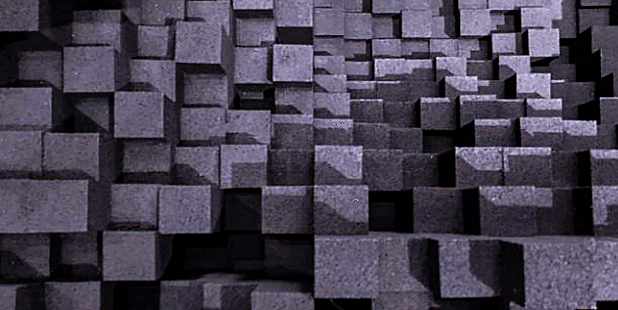Accredited InvestorsAltcoinAnatoli UnitskyAnti-Money Laundering (AML) In CryptoAPIArbitrageArtCoin TokenArticle DirectoryASICAuction Terminology GlossaryBasics of Stock Market InvestingBear MarketBest Crypto Payment Provider In the WorldBitcoinBlockchainBlockchain ConfirmationBlockchain Consensus MechanismBlockchain ForkBlockchain GlossaryBored Ape Yacht ClubBuild a Business That OutperformsBull MarketBuying SkyWay SharesByzantine Fault Tolerance (BFT) ExplainedCasascius CoinCentral Bank Digital Currency (CBDC)Centralized Crypto ExchangeCoinCoinsetCold WalletCollateralCommodity Futures Trading Commission (CFTC)Cross-Chain TechnologyCRUCrypto ExchangeCrypto GlossaryCrypto JokesCrypto Terms to KnowCrypto TickerCryptocurrencyCryptographyCryptojackingCryptounit BlockchainCryptounit GlossaryCryptounit ProgramdApp (Decentralized Application)Dead CoinDecentralized Exchange (DEX)Decentralized Finance (DeFi)Difference Between Bitcoin and EthereumDifferent Ways of Investing MoneyDigital CurrencyDistributed LedgerDo Your Own Research (DYOR)Dollar Cost Averaging (DCA)Dow Jones Industrial Average (DJIA)EncryptionERC-20ERC-721EthereumEvoScentFear Of Missing Out (FOMO)Fear, Uncertainty and Doubt (FUD)Fiat MoneyFNT Fintech CompanyGenesis BlockGlobal Unit PayGlossary of Banking TermsGlossary of Business TermsGlossary of Financial TermsHalvingHODLHot WalletHow Do I Start InvestingHow Rich is Satoshi Nakamoto?How to Create a BlockchainHow to Find Private InvestorsHow to Get Into FintechHow to Program Smart ContractsI Am Thrilled to Be a Part of This Global ProjectInitial Coin Offering (ICO)Initial Public Offering (IPO)Initial Token Offering (ITO)Innovation Basalt TechnologyInnovative Transportation TechnologiesInternational Bank Account Number (IBAN)Investing in Gold Mining StocksInvesting in Gold MiningJagerJoy of Missing Out (JOMO)Know Your Customer (KYC)LedgerLiquidity in CryptocurrencyMaker and Taker Fees in Crypto TradingMarket Capitalization (Market Cap)Meme CoinMetal Credit CardMetaMaskMillenials Now Have Access to Generational WealthMy Best Investment EverNew Digital EvolutionNFT GlossaryOff-Chain TransactionsOn-Chain TransactionsOpen Edition NFTPeer-to-Peer (P2P)Personal Loan GlossaryProbably the Best STO on the MarketProof of Stake (PoS)Real Estate Glossary of TermsReal Estate Investing GlossaryRebase TokenSecurities and Exchange Commission (SEC)Security Token ExchangesSecurity Token Offering (STO)Soulbound Decentralized Identities for Security TokensSoulbound ID Launch by Stobox Proves a SuccessSoulbound TokensStoboxStock Market GlossaryTestimonialsTether Platform and Token (USDT)UnitEx ExchangeUnitsky String TechnologiesUNTBUSDUValidatorWe Started Investing When We Were 25What are Blue Chip NFT?What are Blue Chip Stocks?What are Crypto Assets?What are Crypto Smart Contracts?What are CryptoPunks NFT?What are Digital Assets?What are Digital Collectibles?What are Gas Fees?What are Gas Wars?What are Hashmasks?What are Non Fungible Tokens?What are Non-Sufficient Funds (NSF)?What are Soulbound Tokens (SBT)?What are Stablecoins in Crypto?What are Transactions Per Second (TPS)?What are Utility NFTs?What are Utility Tokens?What Does Burning Crypto Mean?What Does Diamond Hands Mean?What Does Paper Hands Mean?What Does To The Moon Mean?What Does WAGMI Mean?What Happened to Satoshi Nakamoto?What is a 51% Attack?What is a Baby Boomer?What is a Backlink?What is a Banner?What is a Barcode?What is a Bid-Ask Spread in Crypto?What is a Block in Blockchain?What is a Block Reward?What is a Blockchain Address?What is a Blockchain Node?What is a Blockchain Oracle?What is a Blog?What is a Bond?What is a Bot?What is a Broker?What is a Business Accelerator?What is a Cash Cow?What is a Commercial Bank?What is a Commodity?What is a Con?What is a Credit?What is a Credit Limit?What is a Credit Rating?What is a Crypto Airdrop?What is a Crypto Bridge?What is a Crypto Scam?What is a Crypto Token?What is a Crypto Wallet?What is a Crypto Whale?What is a Crypto Winter?What is a Cryptocurrency Public Ledger?What is a Cryptocurrency Roadmap?What is a DAO?What is a Dark Pool?What is a Day Trader?What is a Dead Cat Bounce?What is a Default?What is a Derivative?What is a Digital Credit Card?What is a Fiscal Quarter?What is a Fungible Token?What is a Governance Token?What is a Grace Period?What is a Hard Fork?What is a Hot Wallet?What is a Hybrid Blockchain?What is a Hybrid PoW/PoS?What is a Joint Account?What is a Market Cap?What is a Merkle Tree in Blockchain?What is a Mining Farm?What is a Nonce? What is a PFP NFT?What is a POS System?What is a Prepaid Card?What is a Private Blockchain?What is a Private Key?What is a Public Blockchain?What is a Public Key?What is a Reserve Currency?What is a Ring Signature?What is a Routing Number?What is a Rug Pull in Crypto?What is a Safe Deposit Box?What is a Satoshi?What is a Security Token?What is a Seed Phrase?What is a Shitcoin?What is a Sidechain?What is a Soft Fork?What is a Spot Market?What is a State Bank?What is a SWIFT Code?What is a Tax Identification Number (TIN)?What is a Time Deposit?What is a Transaction Account?What is a Variable Interest Rate?What is a Virtual Assistant (VA)?What is a Virtual Card?What is a Virtual Currency?What is a Visa Card?What is a Whitelist in Crypto?What is a Whitepaper?What is Accounts Payable (AP)?What is AMA in Crypto?What is Amortization?What is an Accrual?What is an ACH Transfer?What is an Actuary?What is an Addendum?What is an Algorithm?What is an Angel Investor?What is an Annuity?What is an Asset?What is an ATM?What is an Atomic Swap?What is an Audit?What is an Avatar?What is an EIN?What is an Embargo?What is an Entrepreneur?What is an IDO (Initial Dex Offering)?What is an Interest Rate?What is an Internet cookie?What is an Investment Bank?What is an NFT Drop?What is an NFT Floor Price?What is an Ommer Block?What is an Orphan Block?What is an Outstanding Check?What is an Overdraft?What is Artificial Intelligence (AI)?What is B2B (Business-to-Business)?What is B2G (Business-to-Government)?What is Bartering?What is Bitcoin Dominance?What is Bitcoin Pizza Day?What is Blockchain Immutability?What is Blockchain Used For?What is BRICS?What is Business-to-Consumer (B2C)?What is C2C (Customer to Customer)?What is Capitalism?What is Catfishing?What is CFD Trading?What is Check Kiting?What is Cloud Mining?What is Communism?What is Content Marketing?What is Decentralization in Blockchain?What is DeFi in Crypto?What is Delisting?What is Depreciation?What is Digital Marketing?What is Diversification?What is Double Spending?What is Dumb Money?What is Dumping?What is Earnings Per Share (EPS)?What is Economics?What is Email Marketing?What is Equity?What is Etherscan?What is Fintech?What is Foreign currency?What is Forex?What is Fundamental Analysis (FA)?What is GameFi?What is Generative Art NFT?What is Gwei?What is Hard Currency?What is Hash Rate?What is Hashing in Blockchain?What is Inflation?What is Initial Game Offering (IGO)?What is Interest?What is Interest Income?What is Mainnet?What is Mastercard?What is Metaverse in Crypto?What is Mining in Cryptocurrency?What is Minting NFT?What is Mobile Banking?What is Money Laundering?What is NFT Alpha?What is NFT Metadata?What is NFT Rarity?What is NGMI Meaning?What is Nominal Interest Rate?What is Online Banking?What is Open-End Credit?What is OpenSea NFT Marketplace?What is Personal Identification Number (PIN)?What is Play-to-Earn?What is Polygon?What is Proof of Authority (PoA)?What is Proof of Work (PoW)?What is Public Key Cryptography?What is Pump and Dump?What is Quantum Computing?What is Refinancing?What is Retail Banking?What is Ripple?What is Sharding?What is Slippage in Crypto?What is Smart Money?What is Solvency?What is Soulbound ID?What is SSL?What is Staking in Cryptocurrency?What is Technical Analysis (TA)?What is Testnet?What is the Ask Price?What is the Better Business Bureau (BBB)?What is the Bid Price?What is the Dark Web?What is the InterPlanetary File System (IPFS)?What is the Gold Standard?What is the Lightning Network?What is the Prime Rate?What is the Sandbox?What is the Secondary Market?What is the World Bank?What is Tier 1 Capital?What is Tokenomics?What is TRC-20?What is Universal Banking?What is Unspent Transaction Output (UTXO)?What is Usury?What is Volatility in Crypto?What is Wash Trading?What is Web3?What is Whisper?What is XRP?What is Zero-Knowledge Proof (ZKP)?Who is Beeple?Who is Satoshi Nakamoto?Who is Vitalik Buterin?Why Tokenization is a Safe HavenWhy You Should Try Your Hand at Trading
What is an Orphan Block?
- Home
- Blockchain Glossary
- What is an Orphan Block?
The blockchain ecosystem relies heavily on miners to keep the system running. However, problems can arise when two or more miners mine a new block at the same time, leading to confusion about which block to add to the main chain.

While these blocks may look the same, they can differ in how they are treated by various blockchain protocols.
There are three types of blocks that can be encountered in the blockchain ecosystem: orphan, ommer (uncle), and stale blocks. Orphan blocks are blocks that are not considered valid because their parent block is unknown. In contrast, ommer blocks are valid since their parent block is known and are rewarded. Stale blocks are valid but are no longer part of the main chain.
What is an Orphan Block?
In older versions of the Bitcoin Core software, orphan blocks were blocks without a known or existing parent block. However, since the release of Bitcoin Core v.0.10 in early 2015, true orphan blocks are no longer possible. Despite this, the term "orphan block" is still commonly used in the cryptocurrency industry to refer to valid mined blocks that have been discarded.
When people use the term "orphan block," they are typically referring to a stale block, which is a valid block that is no longer part of the longest and valid blockchain due to its lower difficulty level. The block reward and transaction fees of a stale block are no longer spendable on the valid blockchain, which means that the miner who found the block does not receive the reward or fees. This situation can cause issues for mining pools that use payout strategies other than "proportional."
Technically, calling a stale block an orphan block is incorrect since it does have a parent block. In the Bitcoin source code and more technical discussions, orphan blocks and stale blocks are two distinct types of blocks. However, in general discussions, people often use the term "orphan block" to refer to stale blocks.
Stale blocks are well-formed blocks that are no longer part of the longest and most well-formed blockchain because they do not have sufficient proof-of-work. If a miner or mining pool forks the blockchain and demonstrates that they have done the most work, establishing a new main chain, the miners who failed to switch to this chain would be working on stale blocks and would not be eligible for a mining reward.
As previously noted, the term "orphan block" is commonly used to refer to blocks that have been rejected by the network, despite not accurately reflecting a familial relationship. In reality, an orphan block would refer to a block that lacks information about its parent blocks, resulting in an incomplete block hash. As the block hash includes information about preceding blocks, an orphan block would be anomalous in a network that relies on validating all preceding blocks.
A block lacking parental block information is likely to have been tampered with. Nonetheless, an unaccepted block is typically called an orphan block for simplicity's sake.
Ommer Blocks
An ommer block, which is also sometimes referred to as an "uncle block", is a valid block that is not included in the blockchain's longest chain. This can occur in a blockchain that uses a proof-of-work consensus algorithm, such as Bitcoin. When miners compete to solve a block, there can be instances where multiple miners solve the block at the same time. In these cases, the network will only accept one of the blocks, and the other blocks become ommer blocks.
Ommer blocks are similar to orphan blocks, which are also blocks that are not included in the blockchain's longest chain. However, ommer blocks are different in that they do have a known parent block. In fact, ommer blocks are created by including a reference to a previous block that is not the immediate parent. This can happen when two miners solve a block at almost the same time, and one of the blocks includes a reference to the other block as its parent.
Ommer blocks were first introduced in the Ethereum blockchain when it used a proof-of-work consensus algorithm, prior to the transition to proof-of-stake in mid-September 2022. In Ethereum, ommer blocks served a specific purpose: to incentivize miners to continue mining even when they were unable to solve a block before other miners. Miners who created ommer blocks received a smaller reward than those who created valid blocks, but still received a reward. This helped prevent miners from leaving the network when they realized they could not solve a block before their competitors.
In addition to incentivizing miners, ommer blocks can also improve the security of the blockchain network. By including references to ommer blocks, the network can create a larger and more robust blockchain. This can help to prevent attacks on the network, as attackers would need to control a significant portion of the network's computing power to alter the blockchain.
How to Prevent Stale Blocks (Orphan Blocks)?
Stale blocks can be a problem for miners because they do not receive the block reward or transaction fees associated with the stale block. Fortunately, there are several strategies that can help to prevent stale blocks:
- Faster Block Time: By reducing the time between block creations, the likelihood of two miners creating a block simultaneously is reduced, which in turn reduces the chance of stale blocks.
- Lower Latency: Miners can reduce the likelihood of stale blocks by improving their network latency. A lower latency network allows miners to receive information about new blocks more quickly, reducing the chance of creating a stale block.
- Higher Block Propagation Speed: By improving the speed at which new blocks are propagated across the network, miners can reduce the chance of creating a stale block. This can be accomplished by using better network infrastructure, such as dedicated high-speed lines or data centers.
- Mining Pools: Joining a mining pool can help to reduce the likelihood of finding stale blocks. By collectively mining blocks and sharing the rewards among members, mining pools can help to reduce the chance of a single miner finding a stale block.
- Improved Mining Software: Using mining software that is optimized for speed and efficiency can help to reduce the chance of stale blocks. For example, some mining software can prioritize the creation of a block over receiving new transactions, reducing the likelihood of creating a stale block.
Related Articles

What is a Block in Blockchain?
Orphan blocks are blocks in a blockchain that don't belong to the main chain. This happens when two miners create blocks at the same time. While they are not crucial to the blockchain, they can be dangerous if...

What is an Ommer Block?
An ommer block (uncle block), is a valid block that is not included in the primary blockchain. This happens when a miner generates a block that is almost identical to...

What is a Block Reward?
The process of verifying transactions and adding them to the blockchain is known as "mining" and is a crucial component of many...

What is Hashing in Blockchain?
Hashing plays a crucial role in securing the blockchain's data and ensuring its immutability. The cryptographic properties of the hash function make it virtually impossible to tamper with the...
- Home
- Blockchain Glossary
- What is an Orphan Block?